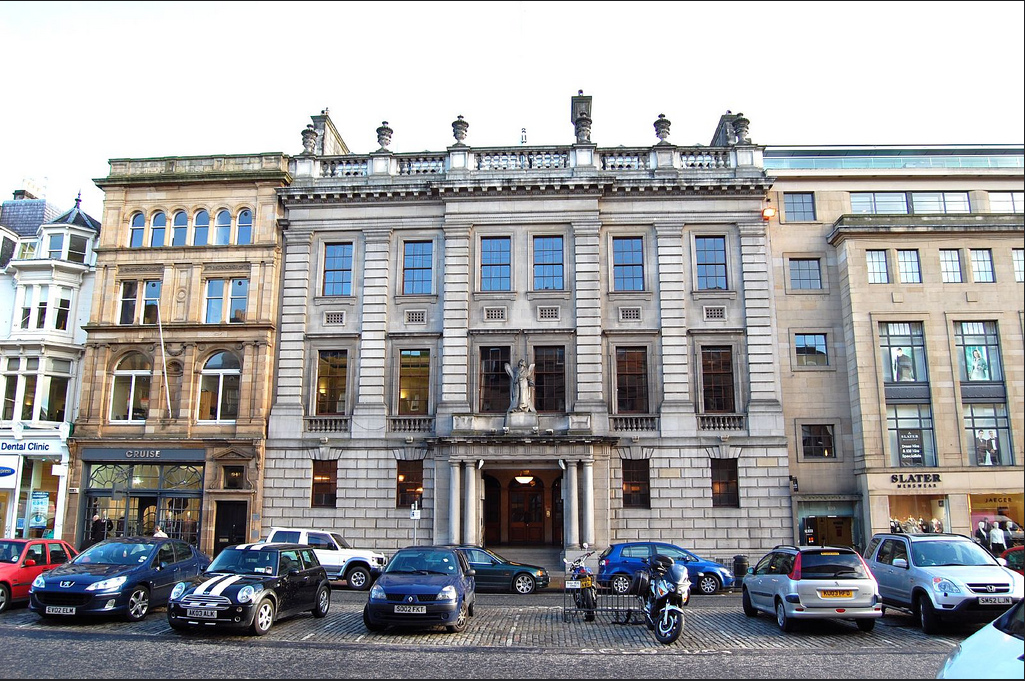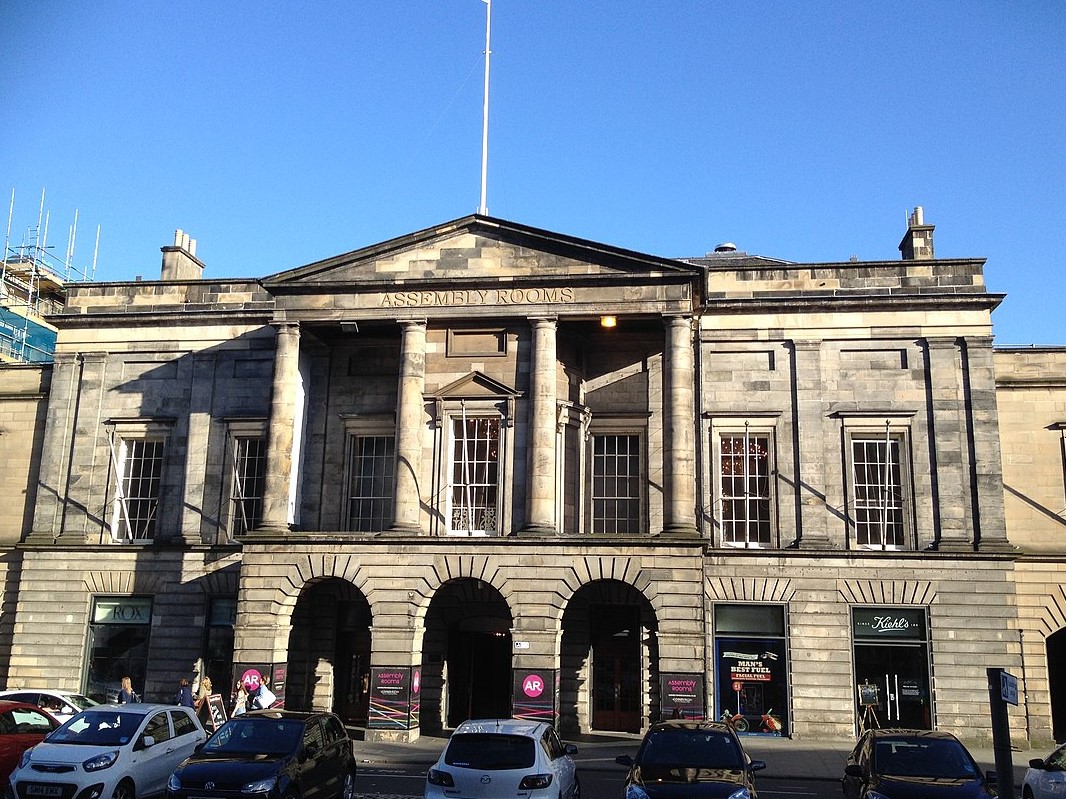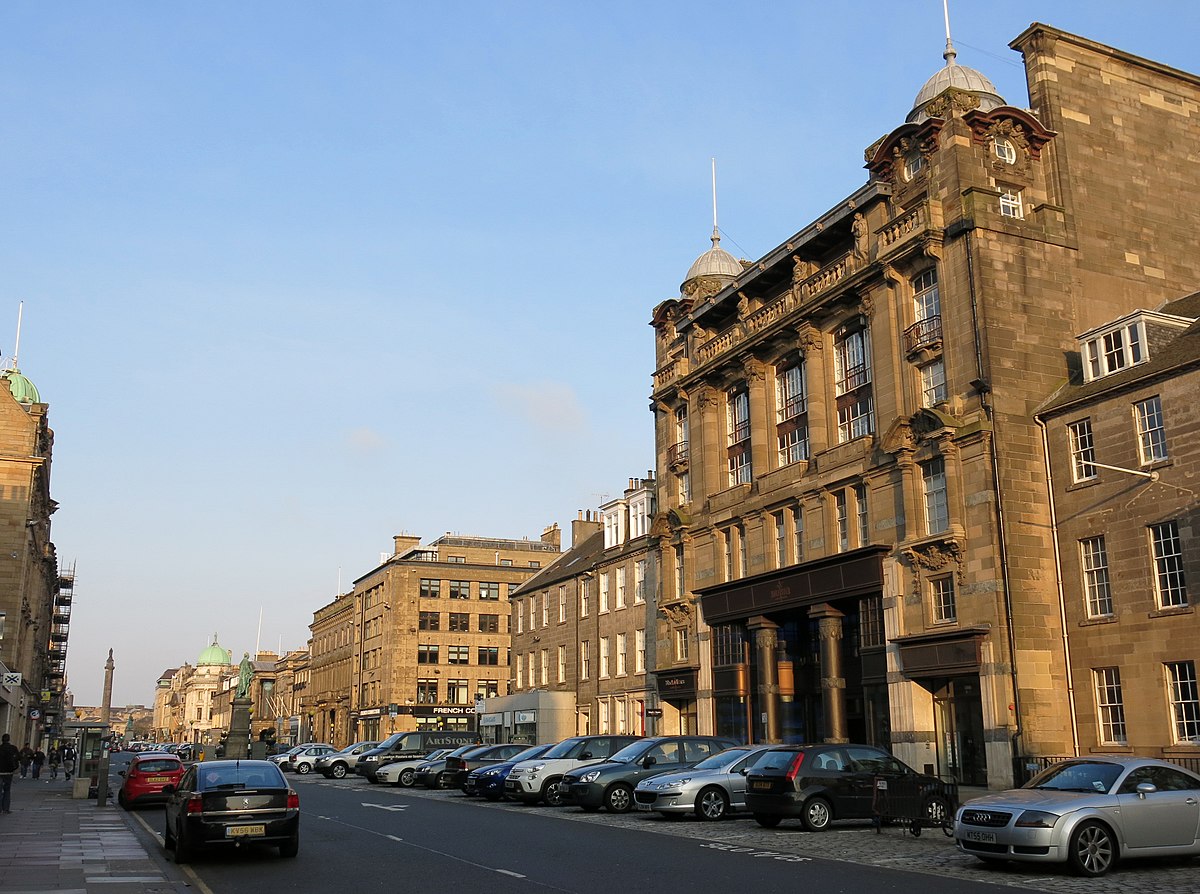
View of George Street
Phography: Enric, Wikimedia Commons (BY-SA)
Thomas Chalmers on George Street
This statue commemorates Thomas Chalmers (1780 – 1847), who became professor of moral philosophy at the University of St. Andrews in 1823, then transferred to the chair of theology at the University of Edinburgh in 1828 and finally became first principal of the Free Church of Scotland in 1843. Chalmers was the principal force behind the Great Disruption when the Free Church separated from the Church of Scotland in protest against interference in the spiritual independence of the Church. It resulted in 470 ministers relinquishing stipends, manses and material security for their families and themselves.
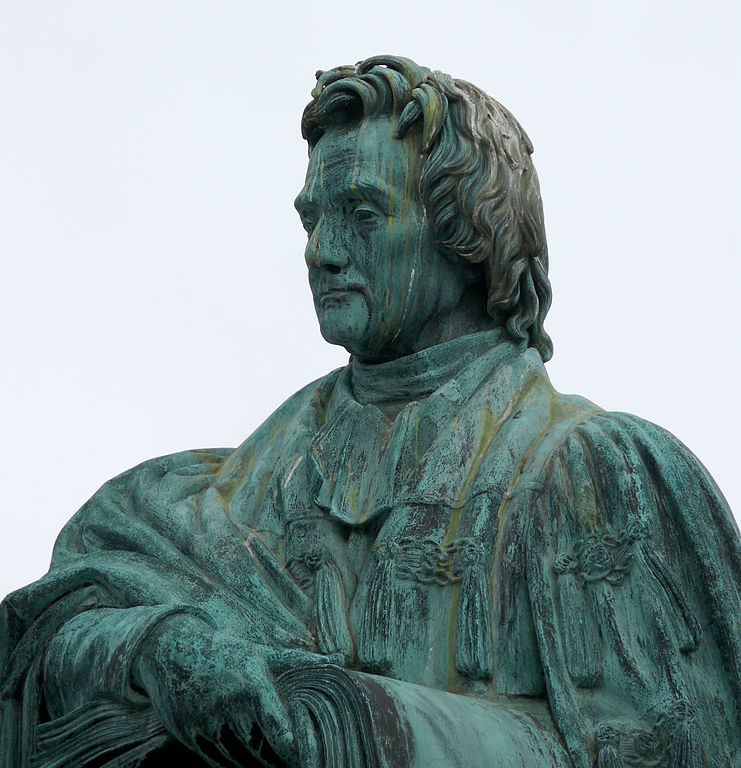
Statue of Thomas Chalmers
Photography: Ad Meskens, Wikimedia Commons (BY-SA)
Despite his role in establishing the Free Church, he was at times dismissive of organized religion, stating in later life that "Who cares about the Free Church compared with the Christian good of the people of Scotland? Who cares for any Church, but as an instrument of Christian good?" He had always put this philosophy into practice through his parish work. In the parish of St John's in Glasgow he had championed new approaches to poverty reduction by revitalizing the old parochial economy of Scotland and enabling the poor to help themselves and resulting in substantial relief of the need for pauper expenditure. Chalmers was a proponent of natural theology and in his On the Power, Wisdom and Goodness of God as Manifested in the Adaptation of External Nature to the Moral and Intellectual Constitution of Man he expounded his thinking on pre-evolutionary natural history before the writings of Charles Darwin.
Turn left and walk 40 metres down North Castle Street to number 39 on the right, former home of Sir Walter Scott.
Sir Walter Scott house on Castle Street
Walk further along George Street to the next intersection and turn to your left. On the other side of Castle Street, you will see a plaque commemorating Sir Walter Scott. The renowned Waverley Novels were written by Sir Walter Scott (1771–1832) while he lived at 39 Castle Street. The first in the series was Waverley, considered the first western historical novel. As a prominent participant in the Enlightenment, Scott’s literary works reflected its principal concerns, namely moral philosophy, economics and history. The philosophers of the Enlightenment were greatly concerned with the effects of capitalism on the traditional Scottish way of life and likewise, Scott promoted ideas of social progress that did not destroy the traditions of the past. Ultimately and perhaps ironically, he also contributed significantly to Scotland’s current national image and there was a deal of invention therein. Placed in charge of organizing celebrations for the visit of George the IV to Scotland in 1822, he staged a remarkable public relations event, with the King dressed in Highland garb and most of the Scottish people greeting him also dressed in tartan ceremonial dress. The kilt, proscribed after the 1745 Jacobite rebellion, was thus revived, albeit in a romanticized form, and has become a potent symbol of Scottish identity, recognized throughout the world.
There are many famous quotations from Scott, perhaps the best known being one often incorrectly attributed to Shakespeare, namely: “Oh, what a tangled web we weave...when first we practice to deceive.” (from Marmion).
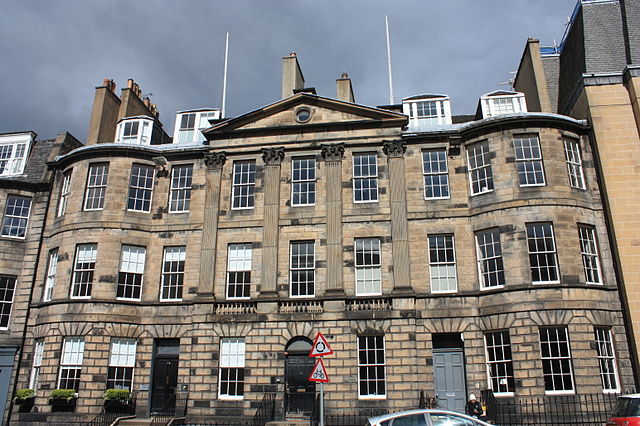
Sir Walter Scott's house (on the right)
Photography: Stephencdickson, Wikimedia Commons (BY-SA)
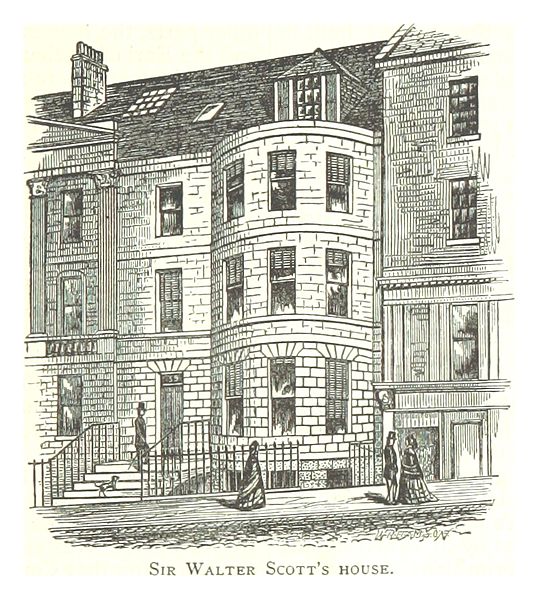
Sir Walter Scott's house on Castle Street
Paterson's Guide to Edinburgh, by PATERSON, William
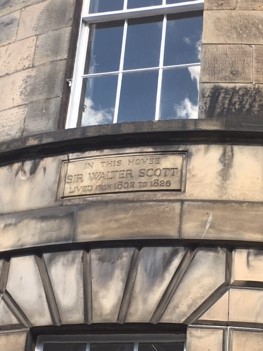
Photograph of Sir Walter Scott’s home in Castle Street, Edinburgh
(Author’s own photograph)
